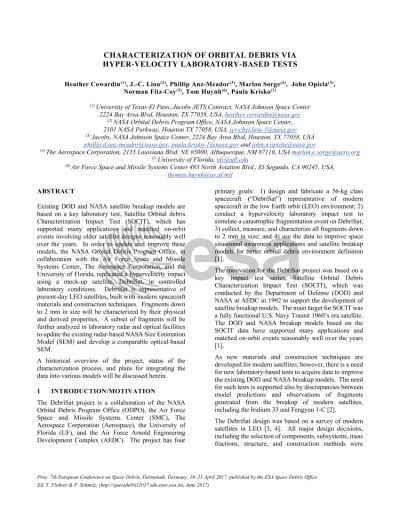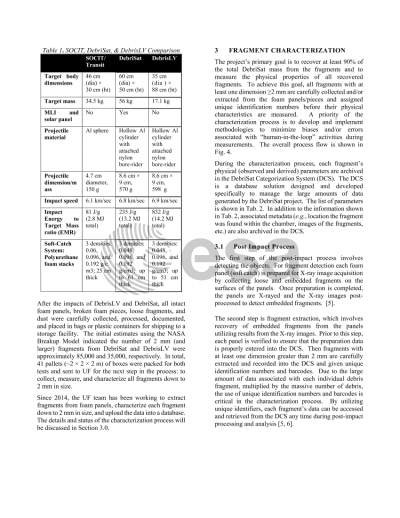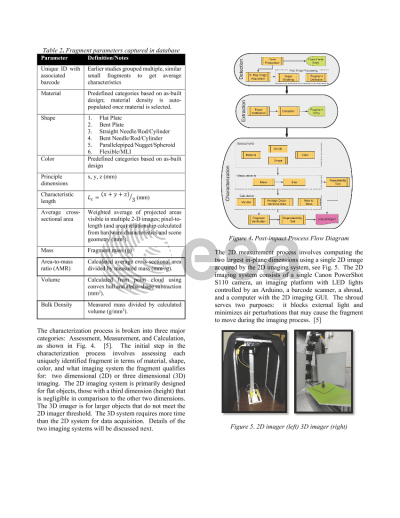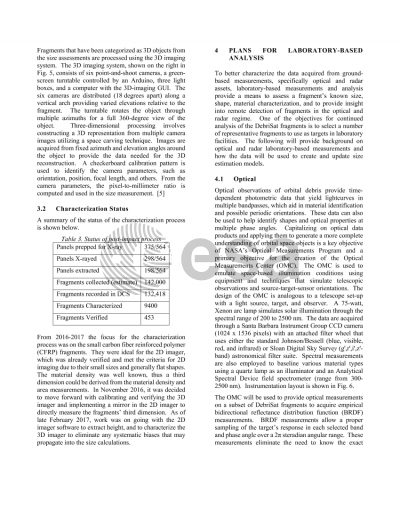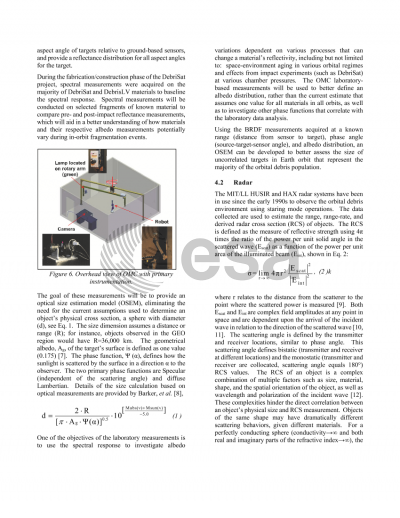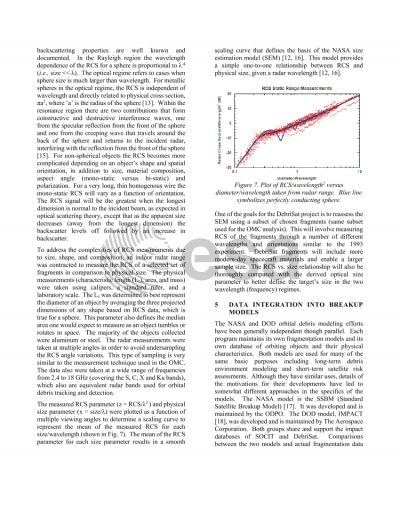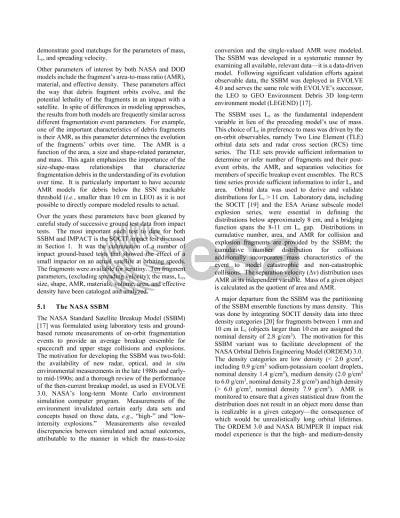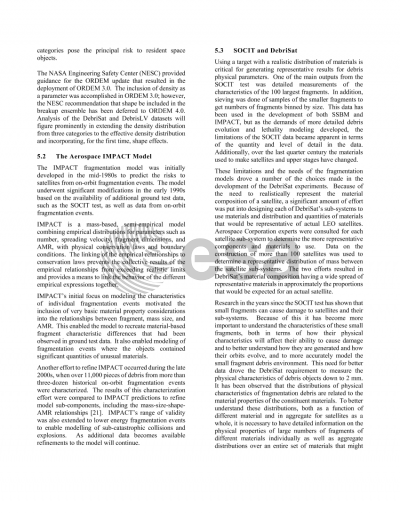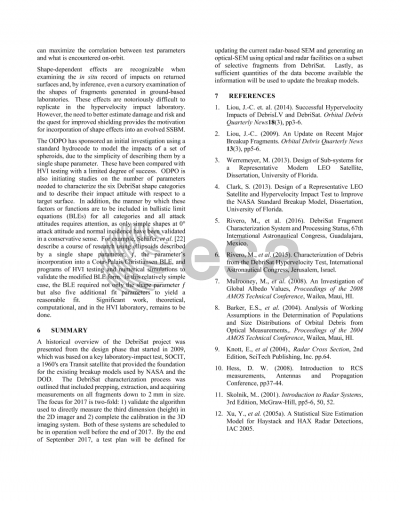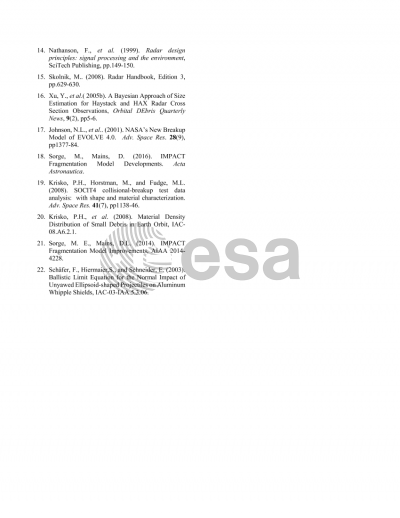Document details
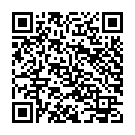
Abstract
Existing DoD and NASA satellite breakup models are based on a key laboratory test, Satellite Orbital debris Characterization Impact Test (SOCIT), which has supported many applications and matched on-orbit events involving older satellite designs reasonably well over the years. In order to update and improve these models, the NASA Orbital Debris Program Office, in collaboration with the Air Force Space and Missile Systems Center, The Aerospace Corporation, and the University of Florida, replicated a hypervelocity impact using a mock-up satellite, DebriSat, in controlled laboratory conditions. DebriSat is representative of present-day LEO satellites, built with modern spacecraft materials and construction techniques. Fragments down to 2 mm in size will be characterized by their physical and derived properties. A subset of fragments will be further analyzed in laboratory radar and optical facilities to update the existing radar-based NASA Size Estimation Model (SEM) and develop a comparable optical-based SEM.
A historical overview of the project, status of the characterization process, and plans for integrating the data into various models will be discussed herein.
Preview
